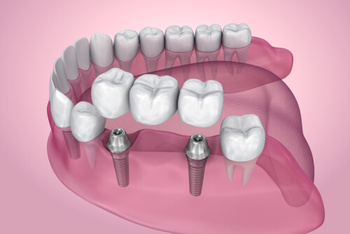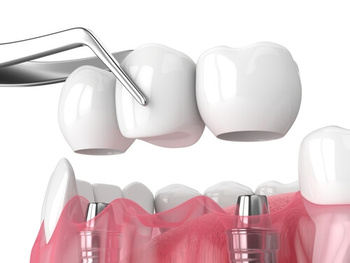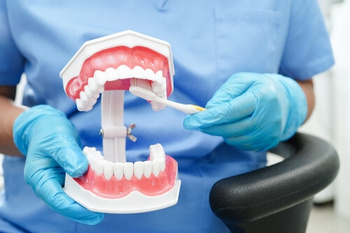
- Harris Dental Boutique
- dental bridge benefits, dental bridge procedure
- Cosmetic Dentistry
Missing teeth can impact daily activities such as speaking and chewing, making restoration an essential step toward a complete smile. Choosing the right replacement helps restore function while enhancing overall comfort. A dental bridge offers a reliable solution, but understanding its value is just as important as deciding to get one. The dental bridge cost varies, and exploring what contributes to its pricing can help in making an informed choice. Whether restoring a single tooth or multiple gaps, knowing what to expect ensures a confident approach to treatment. Learning about the process can help you take the next step with clarity.
What Exactly Is a Dental Bridge, and Why Might You Need One?
A dental bridge is a custom-made solution crafted to replace missing teeth by using support from adjacent teeth. Depending on the case, different types of dental bridges may be recommended. A cantilever bridge is used when support is available from only one side, while Maryland bridges rely on a bonded framework for stability. Whether replacing one or more teeth, a bridge helps maintain alignment by preventing natural teeth from shifting. Choosing the right option ensures a balanced, functional, and complete smile.
What Is the Average Cost of a Dental Bridge?
A dental bridge in Australia is generally priced from $1,500 per tooth. Consulting a dentist will help you get an accurate estimate tailored to your specific case. They will review your dental condition and advise on the most suitable replacement method.
What Factors Should You Consider When Estimating the Cost of a Dental Bridge?
Replacing missing teeth with a bridge is an investment in both function and appearance. Several factors impact the final price, making it important to understand what affects the overall expense.

Type of Bridge Selected
The kind of bridge chosen plays a key role in determining the dental bridge cost. Traditional options use crowns on neighbouring teeth for support, while implant-supported bridges rely on surgically placed posts. Cantilever bridges may have different pricing depending on the materials used. Each option has its own advantages, and the level of complexity involved affects the final expense. The selection of the most suitable bridge type depends on both structural needs and long-term durability.
Materials Used in the Bridge
Different materials contribute to the overall tooth bridge cost, with some offering enhanced strength or a more natural appearance. Ceramic and porcelain bridges blend well with natural teeth but may be priced higher due to their aesthetic appeal. Metal-based options, such as those containing gold or other alloys, provide durability while often being more cost-effective. The type of material chosen influences not only the price but also the longevity and resistance to wear. Selecting the right material ensures the bridge functions well while maintaining a natural look.
Number of Missing Teeth Being Replaced
The length of the bridge impacts the overall price, as more artificial teeth require additional materials and structural support. A single missing tooth replacement will typically cost less than a bridge that spans multiple gaps. Longer bridges may also require extra reinforcement to ensure stability over time. The number of missing teeth being restored directly affects the complexity of the procedure. Ensuring proper support for a longer bridge may involve additional costs related to preparation and customisation.
Preparation of Supporting Teeth or Dental Implants
Before placing a bridge, existing teeth or implant sites must be prepared, which can add to the overall expense. If neighbouring teeth are used as anchors, they may need reshaping to accommodate crowns. In cases where implants are required for support, the surgical placement of posts adds another layer of cost. Additional procedures, such as bone grafting, may be necessary to ensure a secure foundation. The extent of preparation required depends on the condition of the supporting structures.
How Is the Dental Bridge Procedure Performed?
Understanding the dental bridge procedure helps patients feel more comfortable about what to expect during each stage of treatment.
Examining the Teeth and Planning the Treatment
Before beginning the dental bridge treatment, a detailed evaluation is carried out to determine suitability. The dentist examines the gap left by the missing tooth and checks the strength of the existing teeth that will support the bridge. X-rays or digital scans may be taken to assess bone structure and overall dental health. A personalised plan is created based on the condition of the surrounding teeth and the type of bridge required. Once the assessment is complete, the preparation stage begins.
Preparing the Abutment Teeth for Support
For a bridge to remain stable, the abutment teeth must be reshaped to accommodate the supporting crowns. A layer of enamel is carefully removed to create the necessary space for the bridge to fit securely. The amount of reshaping depends on the structure of the supporting teeth and the chosen bridge type. If additional strength is required, dental bonding or reinforcement may be applied. After preparation, an impression or digital scan is taken to ensure a precise fit for the final restoration.

Taking Impressions and Creating the Bridge
Once the necessary adjustments are made, a mould or digital scan of the teeth is taken to create a customised bridge. This ensures that the artificial teeth blend naturally with the surrounding ones in both shape and colour. The impressions are forwarded to a dental lab, where technicians craft the bridge using high-quality materials. The process may take a few weeks, depending on the complexity of the design. As the permanent restoration is being crafted, a temporary alternative is provided.
Placing and Fitting the Permanent Bridge
Before attaching the final restoration, the dentist carefully examines its fit and alignment. Any refinements needed to improve comfort and aesthetics are made at this stage. The bridge is bonded using strong dental cement, ensuring it remains stable when chewing or speaking. The dentist confirms that the bridge sits securely without putting excess pressure on the healthy teeth. Final polishing is done to ensure a smooth and natural look.
Ensuring Proper Alignment and Function
A final bite check is performed to confirm that the bridge does not interfere with normal jaw movement. Any minor adjustments are made to prevent uneven pressure on the supporting teeth. The patient is guided on how to care for their new bridge to maintain its longevity. Proper cleaning techniques and regular check-ups help ensure long-term stability. With the procedure complete, the bridge provides a secure and functional replacement for the missing tooth.
Each stage of the dental bridge treatment procedure is carefully carried out to ensure comfort and durability. By following a structured process, the bridge restores function while maintaining a natural appearance.
What Are the Advantages of Choosing a Dental Bridge for Tooth Replacement?
Restoring a Natural and Complete Smile
A missing tooth can create an uneven look, but a bridge provides a seamless way to fill the gap. Designed to match surrounding teeth, it blends naturally for a uniform appearance. This allows for confident speaking and smiling without gaps affecting facial symmetry. Unlike removable options, a bridge remains fixed in place, ensuring a stable and long-lasting solution. With the right care, this restoration can maintain both function and aesthetics for years.
Improving Bite Function and Chewing Efficiency
Gaps left by missing teeth can make eating certain foods more difficult. A bridge restores the ability to bite and chew comfortably, reducing strain on remaining teeth. By distributing pressure evenly, it prevents unnecessary wear on surrounding teeth. The restored structure supports efficient chewing, allowing for a more varied and balanced diet. Choosing a bridge means regaining the ability to eat without discomfort or limitations.
Preventing Shifting of Surrounding Teeth
When a tooth is lost, the neighbouring teeth may start to move into the empty space. Over time, this can cause misalignment, affecting the overall bite. A bridge helps maintain the original positioning of surrounding teeth by filling the space effectively. Keeping teeth in place reduces the risk of future complications that may require further treatment. Stability in tooth alignment ensures long-term comfort and functionality.
Supporting Long-Term Oral Health
Gaps in the mouth can create areas where food particles become trapped, increasing the risk of plaque buildup. Filling these spaces with a bridge makes it easier to sustain good oral health by reducing areas where bacteria can accumulate. Since a bridge is securely fixed, cleaning around it becomes part of a regular dental routine. A well-maintained bridge supports gum health while preventing potential decay in surrounding teeth. Maintaining hygiene with a fixed bridge helps contribute to overall dental stability.
Providing a Reliable and Non-Surgical Solution
For those looking for an alternative to surgical treatments, a bridge offers a non-invasive way to replace a missing tooth. Unlike implant procedures that require surgery, a bridge can be placed without lengthy recovery times. The process involves minimal disruption, making it a practical choice for many individuals. Restoring the smile with a bridge does not require extensive procedures, allowing for a quicker return to normal activities. A fixed restoration provides long-term function without the need for surgical intervention.
Maintaining Overall Dental Health
A bridge does more than restore appearance—it contributes to long-term dental health by preserving structure and function. Keeping teeth properly aligned ensures that biting pressure is evenly distributed, preventing excess stress on specific areas. Supporting the jaw and surrounding teeth maintains stability, reducing the risk of complications in the future. Choosing the right replacement option helps ensure a well-balanced and fully functional smile.
A bridge provides both cosmetic and functional advantages while helping to prevent future dental concerns. Restoring the smile with this solution supports comfort, confidence, and overall well-being.
Restore Your Smile with a Cost-Effective Solution

Replacing missing teeth is an important step toward maintaining a strong and balanced smile. The dental bridge cost varies based on several factors, including the materials used and the number of teeth being replaced. Understanding these details can help you make an informed decision about your treatment.
Our team is here to guide you through the process, ensuring you receive quality care that suits your needs. If you’re considering a bridge, now is the perfect time to explore your options. A well-fitted bridge not only restores function but also prevents potential issues like shifting teeth and uneven bite pressure. Scheduling a consultation allows you to discuss personalised solutions tailored to your dental needs. Investing in the right treatment ensures long-term comfort and durability. Please call us at 07 4158 5813 to book an appointment and take the next step toward a confident smile.
References
https://www.news-medical.net/health/Types-of-Dental-Bridges.aspx
https://www.healthdirect.gov.au/dental-bridge





